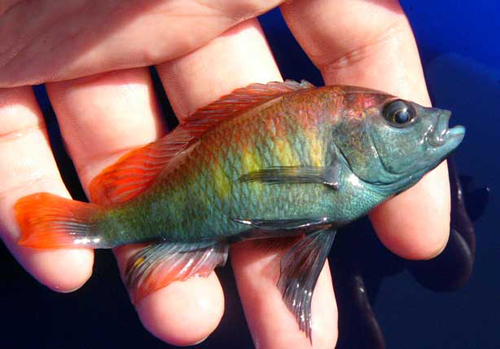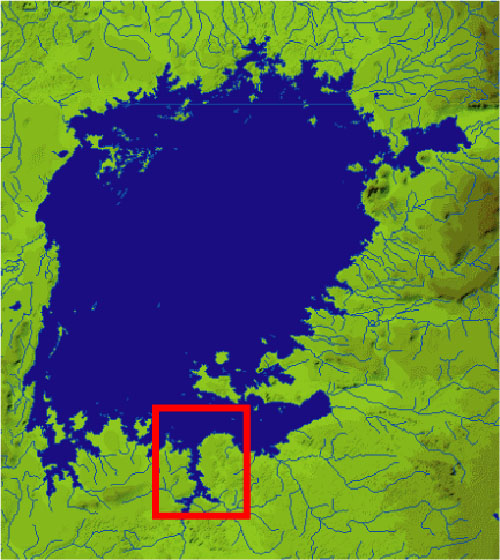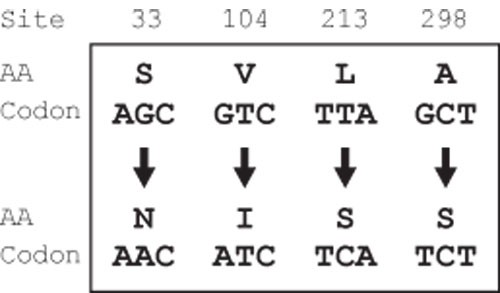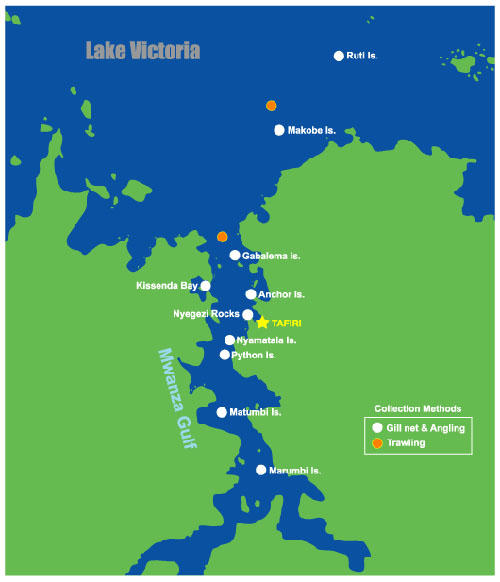
 |
DVISION OF SPECIATION MECHANISM (ADJUNCT) |
| Professor (Adjunct): | OKADA, Norihiro |
| Research Associate: | TAKAHASHI, Kazuhiko |
| Postdoctoral Fellow: | SASAKI, Takeshi |
| Technical Assistant: | MIURA, Seiko |
|
The above members of this adjunct division have started a new project in this institute in April 2003. |
|
During the long history of evolution of vertebrates, they acquired extensive diversity in characters such as morphology, ecology and behavior. Some examples, such as conserved morphological traits of coelacanths, show that phenotypic change during the course of evolution could be sometimes very slow, whereas other examples suggest, by contrast, that their speciation and diversification could be often accomplished very rapidly by the process called adaptive radiation. What factors affected rates of speciation and phenotypic change during the evolution of vertebrates? Although many examples of adaptive radiation (and slow evolution as well) have been reported so far for various groups of vertebrate, its mechanism has been hardly clarified so far, especially from the molecular perspective. The final goal of the research of our division is to understand the processes and mechanisms of speciation of vertebrates using molecular approaches. In particular, we are dedicated to elucidate the mechanism of speciation of cichlids in Lake Victoria (Figure 1), based on our knowledge on the phylogenetic relationships among African cichlids as clarified by our retroposon analysis. |

|
|
Figure 1. A species of cichlid fish (male Pundamilia nyererei) caught in Lake Victoria. |
I. Inference of molecular phylogeny of vertebrate groups using the SINE methodCichlid flocks of the East African Great Lakes, which consist of Lakes Victoria, Malawi, and Tanganyika, have attracted interest of evolutionary biologists for more than a century. These species exhibit extraordinary levels of diversity and high species endemicity to each lake as a result of explosive adaptive radiation that occurred independently and in parallel. Our group has been conducting phylogenetic analysis of these fish using insertions of retroposons (SINEs; short interspersed elements) as markers for elucidation of their evolutionary history. Our studies confirmed that cichlids in Lakes Victoria and Malawi are closely related to each other, and that species in the bot lakes are related to only a portion of the major lineages found in Lake Tanganyika, the oldest Great Lake estimated at 9-12MY. Interestingly, evidence from the above analyses suggested that explosive radiation is indeed in progress in the Victorian fauna at present (see Section II for the detail) Another group of vertebrate that we analyzed using SINEs was the order Testudines (turtles), which constitutes one of the major reptile groups. Our analysis, focusing especially on the superfamily Testudinoidea, revealed several novel phylogenetic relationships among members of this group. Our result indicated that convergence of the major morphological traits that had not been successfully elucidated by the past morphological analyses occurred during their evolution. This study was the first application of the SINE method to a phylogenetic analysis of reptiles. |
II. Analysis of Cichlids in Lake Victoria for elucidation of molecular mechanisms of their speciation and diversificationAmong the cichlid faunas in African Great Lakes, the one in Lake Victoria is considered to be the youngest since this lake is suggested to have once been dried up about 12,000 years ago. Such an evolutionary very recent origin of this fauna is consistent with the observation by our group that most of selectively-neutral polymorphic alleles (presence/absence of retroposons at orthologous sites in the genome) are retained both within and among species of this lake. This fact means that, if a certain allele is uniquely fixed at a certain locus in natural populations of a certain species, we can assume the past and/or present existence of a positive selection on this gene. In such a case, we may be able to regard it as a candidate gene that was responsible for the phenotypic differentiation of this species from other related species. Thus, investigation of cichlids in Lake Victoria is advantageous for the purpose of elucidation of molecular mechanisms of speciation and their following diversification during adaptive radiation. The most impressive appearance of cichlids in Lake Victoria is vivid and beautiful coloration of their body in male adults (see Figure 1 for an example). Cichlids are known to depend largely on their vision when they choose individuals to mate with, and such color variations are considered to affect mate preference by females. This fact implies that body color of males plays an important role for recognition of individuals of their own species during mating with females. At the same time a similar logic can be applied to the visual system of females since the body color of males are recognized by females through their visual system. Thus, if one or both of these factors changed significantly, speciation might occur due to a change in their mate choice. Another interesting point on the visual system of cichlids is that their evolution must have been affected by environmental difference in their habitat such as the turbidity and depth of lake water. An earlier study revealed that, in Lake Victoria, several cichlid species show differently fixed alleles, or significant differences in allele frequencies, of a visual pigment (LWS) gene among different populations within the same species. Although only a limited number of species were investigated in this research, it implies the existence of positive selection on this gene, based on our assumption as mentioned above. In our division, we are interested in elucidating evolution of genes encoding six classes (LWS, SWS-1, SWS-2A, SWS-2B, RH2 and rhodopsin) of visual pigments (opsins), which are known to exist in the cichlid genome, as factors promoting their speciation in Lake Victoria. In order to start an extensive survey of these genes in Victorian cichlids, we conducted sampling of these fish around Mwanza Gulf in the Southern shore of this lake in Tanzania (Fig. 2). In our preliminary analysis of the coding region of the rhodopsin gene that was amplified from representative individuals by polymerase chain reactions (PCRs), four sites were found to show variations of nucleotide so far (Fig. 3). Interestingly, all of these variations were considered to have arisen by nonsynonymous mutations. This observation is not inconsistent with that the rhodopsin gene has been under strong positive selection during the course of evolution of the investigated species. It would be necessary to accumulate more data on the evolution of this gene in order to assume the environmental background that might be (or might have been) related to this phenomenon. A more extensive analysis on molecular evolution of opsin genes in Victorian cichlids is in progress in our division. |
Publication list: |
|
Shedlock, A. M., K. Takahashi, and N. Okada (2004) SINEs of speciation: tracking lineages with retroposon. Trends Ecol. Evol. 19: 545-553. |
|
Sasaki, T., K. Takahashi, M. Nikaido, S. Miura, Y. Yasukawa, and N. Okada (2004) First application of the SINE (short interspersed repetitive element) method to Infer phylogenetic relationships in reptiles: an example from the turtle superfamily Testudinoidea. Mol. Biol. Evol. 21: 705-715. |
|
ugie, A., Y. Terai, R. Ota, and N. Okada (2004) The evolution of genes for pigmentation in African cichlid fishes. Gene 343: 337-346. |
|
Watanabe, M., N. Kobayashi, T. Shin-I, Y. Tateno, Y. Kohara, and N. Okada. (2004) Extensive analysis of ORF sequences from two different cichlid species in Lake Victoria provides molecular evidence for a recent radiation event of the Victoria species flock. Gene 343: 263-269. |
|
Terai, Y., N. Takezaki, W. E. Mayer, H. Tichy, N. Takahata, J. Klein, and N. Okada (2004) Plylogenetic relationships among East African haplochromine fishes as revealed by short interspersed elements (SINEs). J. Mol. Evol. 58: 64-78. |

|

|
|
Figure 2. Localities of collection of cichlids in Lake Victoria. The top panel shows a map of the entire lake. The area indicated by a red rectangle in this panel corresponds to the region shown as a magnified map in the bottom panel. Sampling was conducted by angling and trawling and by using gill nets. White circles denote localities where sampling both by using gill net and by angling was carried out, and orange circles show localities where trawling was done. Sampling was conducted in collaboration with Tanzania Fisheries Research Institute (TAFIRI). |

|
|
Figure 3. Variations observed in the rhodopsin gene that was amplified from representative species of cichlids collected in Lake Victoria. All the variations were assumed to have been caused by nonsynonymous changes that alter amino acid sequences. Direction of mutation was postulated by comparison of the sequences with those from outgroup species in Lake Tanganyika. AA, amino acid. |
